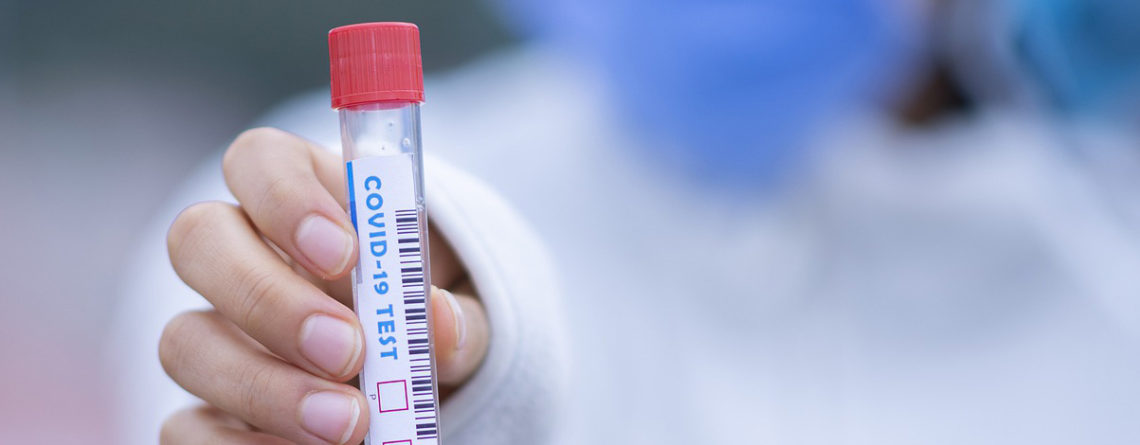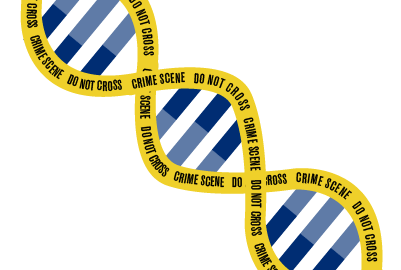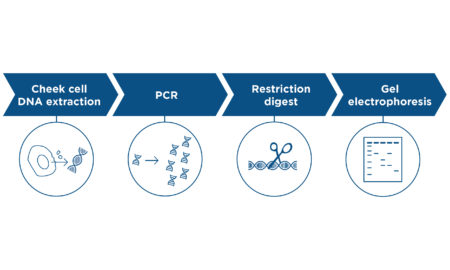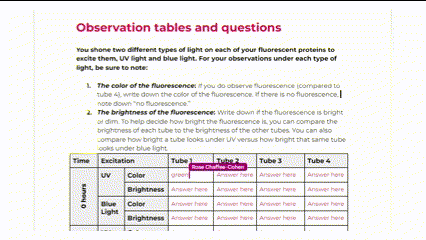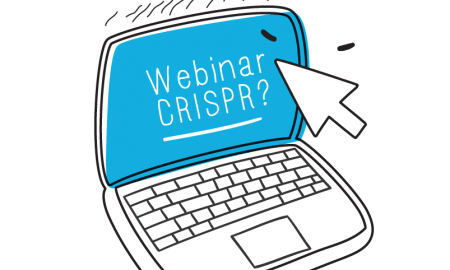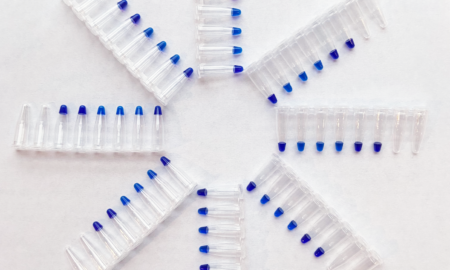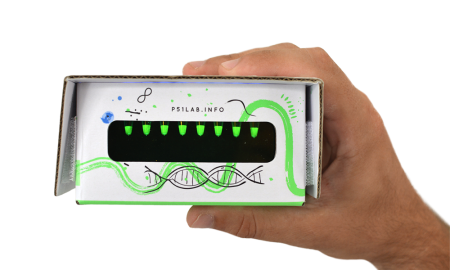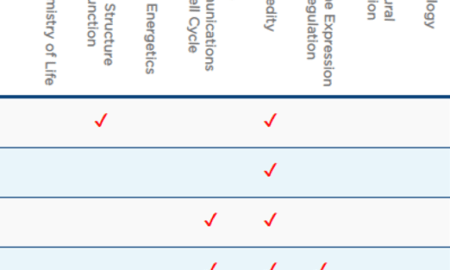Bring the science of COVID testing to your class!
Q: What is a qPCR test?
A: An excellent way to engage your students on topics like viruses, biotechnology, and the interface of genetics and medicine!
Quantitative PCR (qPCR) is suddenly on everyone’s radar because it is the gold standard for detection of SARS-CoV-2, the virus that causes COVID-19. For educators this presents an opportunity to engage your students on a biotechnology topic that they are already talking about. However, qPCR machines, the machines most often used in a COVID-19 test, are incredibly expensive, putting hands-on qPCR experiments out of reach for most classrooms. qPCR machines combine regular PCR with automated real-time fluorescence detection. But in a classroom there is no reason those functions need to be integrated. In fact, for student understanding, it can even benefit to separate them!
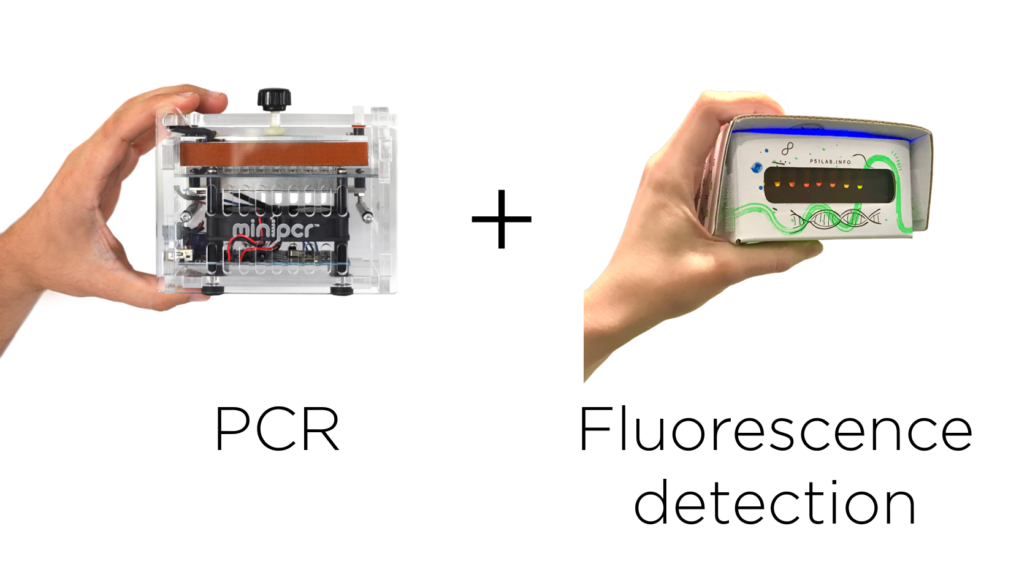
In the new COVID-19 qPCR Learning Lab from miniPCR bio, students do just this. Using a regular PCR thermal cycler and a separate low-cost fluorescence visualizer (such as the P51™ viewer from miniPCR bio) they will test fictional patients for SARS-CoV-2 infection. Separating the PCR and fluorescence visualization across two devices provides an accessible way to get hands-on experience that is not only affordable but brings the protocols to life—literally putting the experiment in the hands of your students.
Plus, because the PCR is interpreted using a fluorescent readout, your students can get their data in a single class period! If desired, you can also have your students perform gel electrophoresis after the PCR, but this is not required for them to interpret their experimental results.
The new COVID-19 qPCR Lab is set up as an engaging case study. Students act as healthcare providers at an airport screening facility and test fictional patients for infection with the SARS-CoV-2 virus.
In the lab, students:
- PCR amplify SARS-CoV-2 specific genetic sequence from simulated patient samples
- Visualize the results of PCR using a fluorescent readout
- Diagnose fictional patients based on results
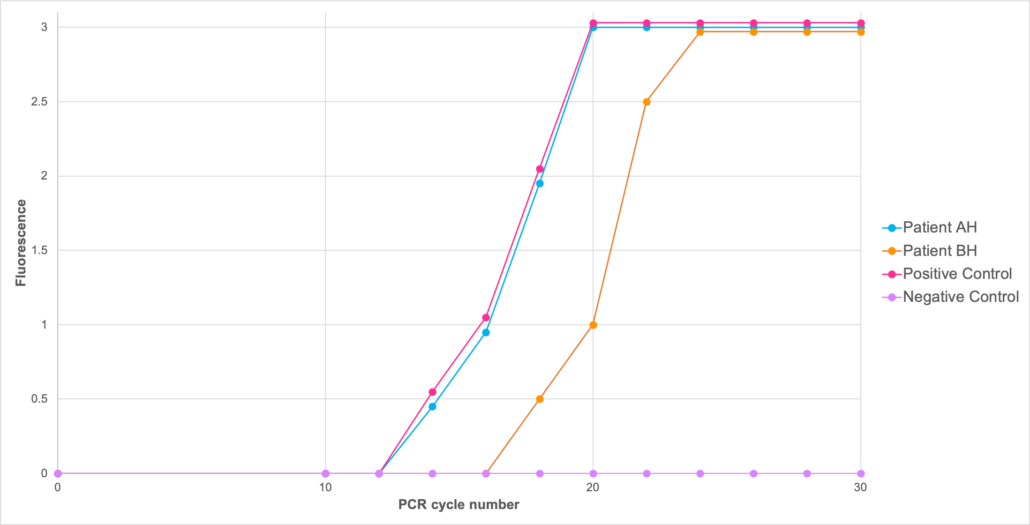
The lab can be set up two different ways. For a more introductory approach, students compare the fluorescence of the patient samples at the end of the PCR to positive and negative controls and clearly diagnose each patient. For more advanced classes, students monitor their PCR samples over time to model the principles of qPCR without the need for an expensive qPCR machine. While the data are not as precise as what would be generated using a specialized qPCR machine, the resulting curves clearly demonstrate the principles of qPCR in a direct, memorable way.
Your students have likely all had a COVID test. Now let them perform one!
Disclaimer: no pathogenic materials are used. This experimental protocol engages students in a simulated patient diagnosis exercise. None of the materials provided in this lab kit pose a pathogenic risk. For educational use only. Not for diagnostic use.
Learn more about the COVID-19 qPCR Learning Lab.
Additional resources:
